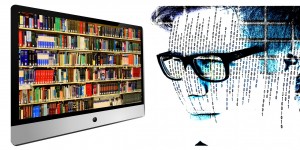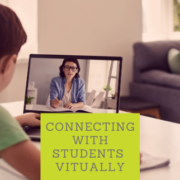Instructional Techniques for LD Students
Just like any other student, a student with a learning disability benefits greatly from structured, engaging, individualized instruction. And again, all students, no matter what type of learning obstacle may accompany them, have unique ways of accessing and retaining information. But what specific strategies can foster optimum learning opportunities in the classroom? Well, that depends on your students. Below are numerous strategies to best navigate your inclusion classroom and assist every student in the best way possible.
Present information, assignments, readings, etc. in different ways
Students with learning disabilities sometimes require multiple avenues or scaffolds in order to best access the material. This can mean that, while some students benefit from audible instruction—simply listening to directions—others may need to see instructions written out. A best practice, especially with the technology provided in most classrooms these days, is to provide clear and concise directions both orally and visually. This is achieved by printing individual handouts with directions, or leaving instructions on the Smartboard while students work on the task. Posting directions on the board or at students’ desks also reinforces the process of rereading for clarification. If students have the directions at their fingertips, memory or attention issues are circumvented.
Another beneficial way to present information to students with learning disabilities is to carefully and deliberately model the task or activity. For instance, written and spoken lab directions are helpful for many, but actually seeing the process of measuring, pouring, calculating, etc., may be necessary for students with processing disorders or issues pertaining to executive functioning. Writing assignments should also be modeled for students, as sentence structure, organization, and fluidity are not easily accomplished just by discussing. These, and other high-level thinking skills, require some step-by-step handholding for ALL students.
Furthermore, when creating or modeling different examples, it may be helpful for some students with learning disabilities to see a sample in front of them, not just up on the board. This way, as the teacher is modeling the task, students can follow along closely, taking notes and highlighting as they work.
Allow students to access readings and class materials in different ways. Again, technology can be a major asset for inclusion classrooms. With the use of laptops, headphones, audio files, etc., students are able to read and write with assistance. Much like many accommodations require, students can listen to texts while following along. They are able to highlight or mark texts digitally using google classroom or other interactive technologies. Students can even complete and submit work without ever having to print or keep track of a tangible document. This can be particularly beneficial for a student with executive functioning issues, where organization can be a real struggle.
Modifications for assessments and assignments are also greatly beneficial. For example, conveying the theme of a novel in paragraph form could be extremely intimidating for many students, especially those with a learning disability involving written language. Since a best practice for teaching is to utilize student choice, why not allow students to represent a theme or other difficult concepts by a different method? Some may thrive by creating a collage or other visual representation, while others may compose a poem or comic strip to convey the theme.
A key to exceptional instruction is to provide students with engaging, individualized means of learning. This not only benefits students with learning disabilities—all students flourish when teachers utilize best practices.






